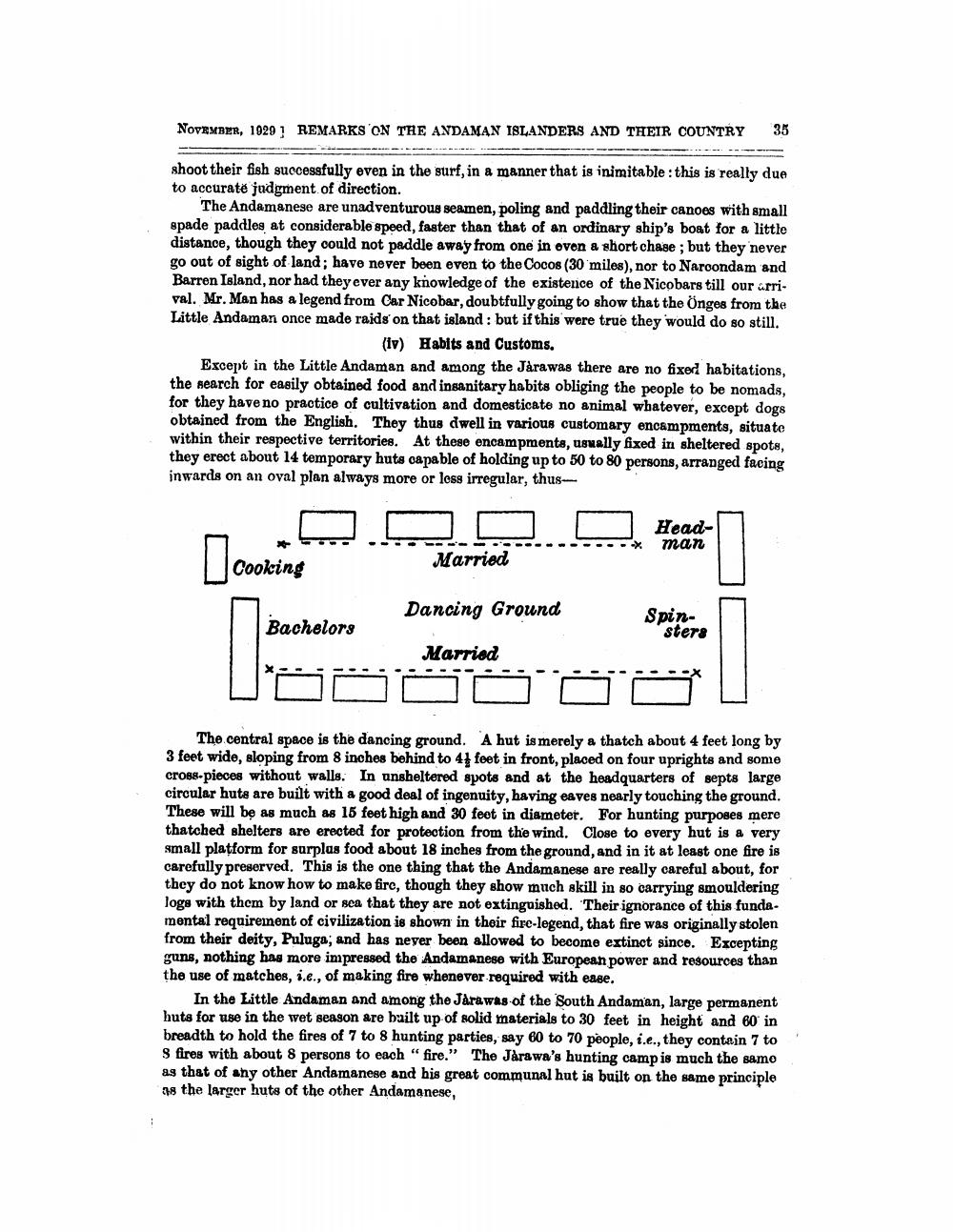________________
NOVRMBER, 1020
REMARKS ON THE ANDAMAN ISLANDERS AND THEIR COUNTRY
35
shoot their fish successfully even in the surf, in a manner that is inimitable: this is really due to accurate judgment of direction.
The Andamanese are unadventurous seamen, poling and paddling their canoes with small spade paddles at considerable speed, faster than that of an ordinary ship's boat for a little distance, though they could not paddle away from one in ovon a short chase; but they never go out of sight of land; have never been even to the Cocos (30 miles), nor to Naroondam and Barren Island, nor had they ever any knowledge of the existence of the Nicobars till our arri. val. Mr. Man has a legend from Car Nicobar, doubtfully going to show that the Onges from the Little Andaman once made raids on that island: but if this were true they would do so still.
(iv) Habits and Customs. Except in the Little Andaman and among the Járawas there are no fixer habitations, the search for easily obtained food and insanitary habits obliging the people to be nomads, for they have no practice of cultivation and domesticate no animal whatever, except dogs obtained from the English. They thus dwell in various customary encampments, situate within their respective territories. At these encampments, usually fixed in sheltered spots, they erect about 14 temporary huts capable of holding up to 50 to 80 persons, arranged facing inwards on an oval plan always more or lose irregular, thus
Head-* man
Cooking
Married
Dancing Ground
Bachelors
Spin
sters
Married
The central space is the dancing ground. A hut is merely a thatch about 4 feet long by 3 feet wide, sloping from 8 inches behind to 41 feet in front, placed on four uprights and some cross-pieces without walls. In unsheltered spots and at the headquarters of septs large circular huts are built with a good deal of ingenuity, having eaves nearly touching the ground. These will be as much as 15 feet high and 30 feet in diameter. For hunting purposes mere thatched shelters are erected for protection from the wind. Close to every hut is a very small platform for surplas food about 18 inches from the ground, and in it at least one fire is carefully preserved. This is the one thing that the Andamanese are really careful about, for they do not know how to make fire, though they show much skill in so carrying smouldering Jogs with them by land or sea that they are not extinguished. Their ignorance of this fundamental requirement of civilization is shown in their fire-legend, that fire was originally stolen from their deity, Puluga, and has never been allowed to become extinct since. Excepting guns, nothing has more impressed the Andamanese with European power and resources than the use of matches, i.e., of making fire whenever required with ease.
In the Little Andaman and among the Jarawas of the South Andaman, large permanent huts for use in the wet season are built up of solid materials to 30 feet in height and 60 in breadth to hold the fires of 7 to 8 hunting parties, say 60 to 70 people, i.e., they contain 7 to 8 fires with about 8 persons to each "fire.” The Jarawa's hunting campis much the samo as that of any other Andamanese and his great communal hut is built on the same principle 8 the larger huts of the other Andamanese,




